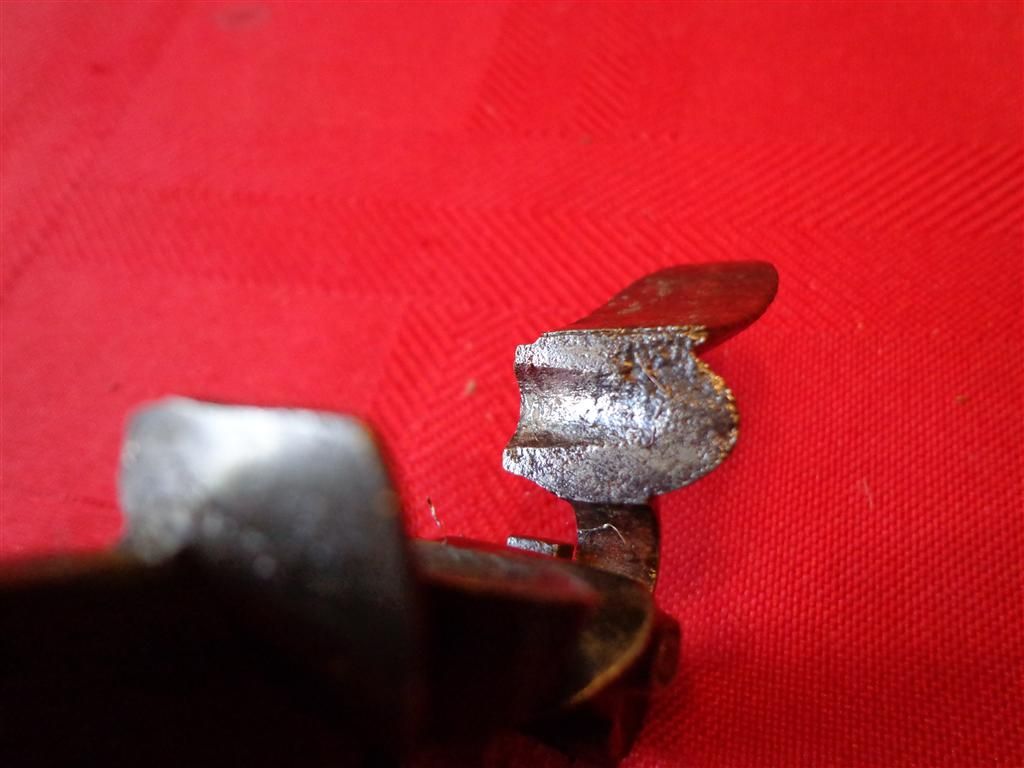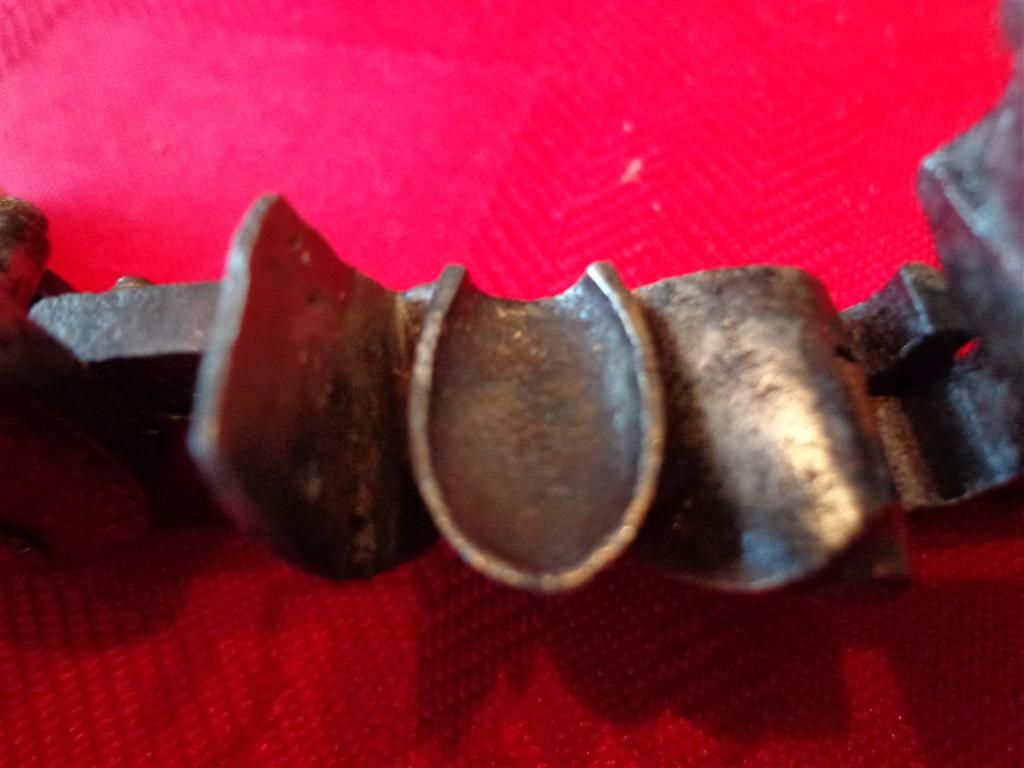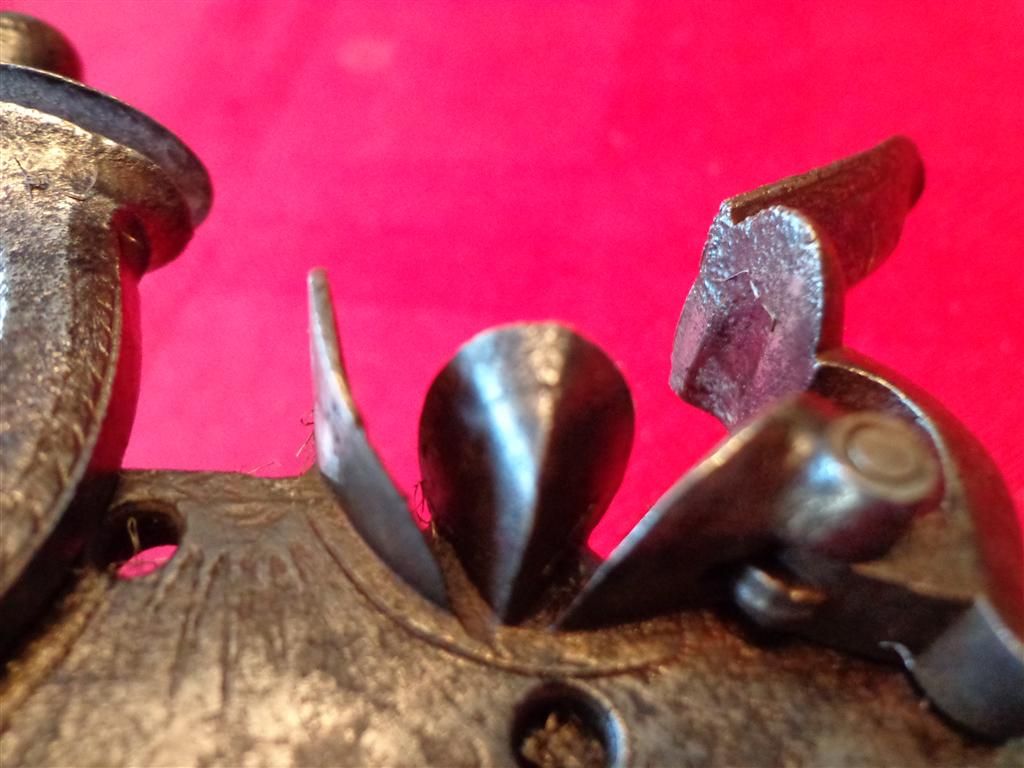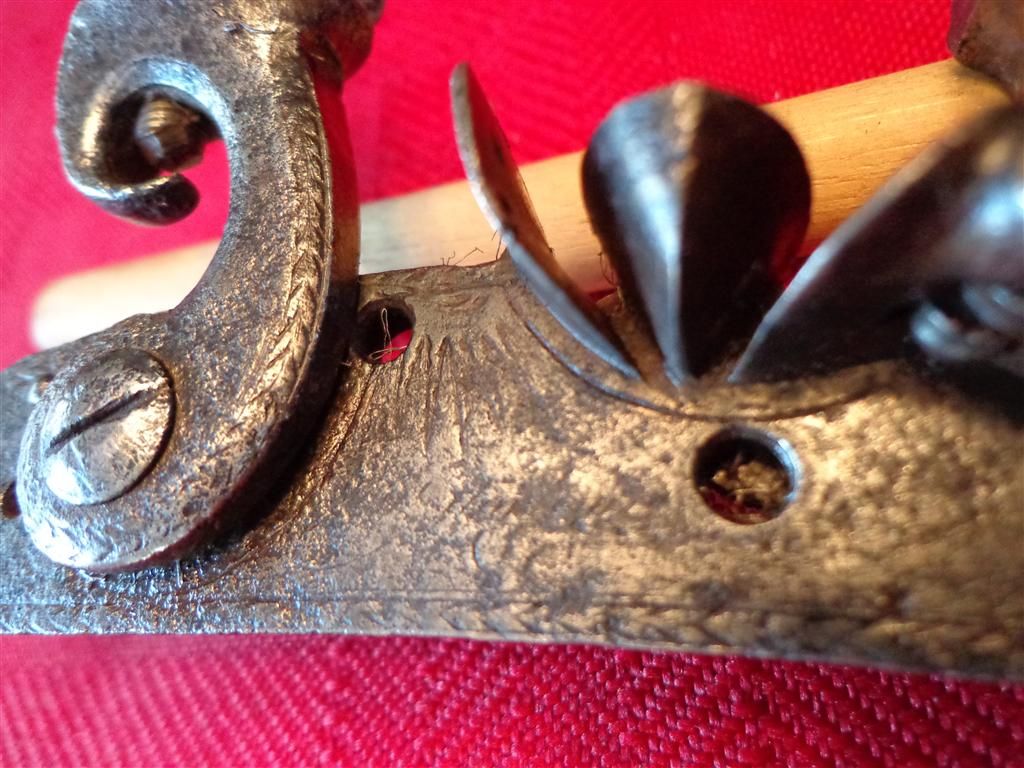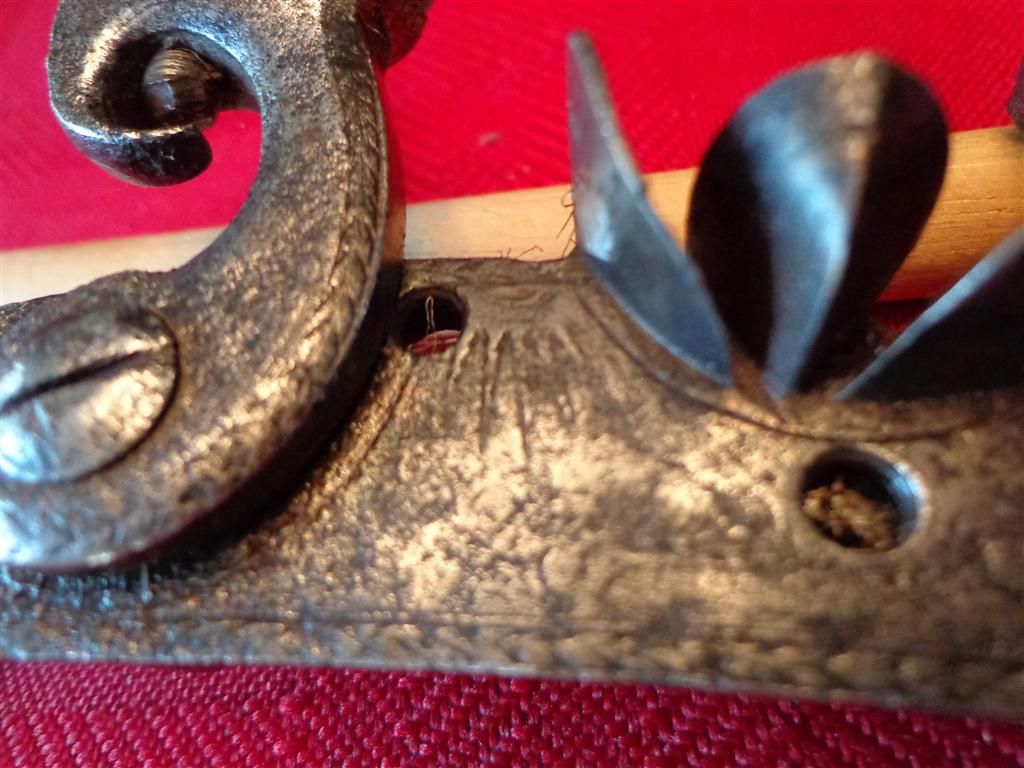- Joined
- May 24, 2005
- Messages
- 4,952
- Reaction score
- 4,317
Hello all. This is a new addition to my lock collection.
My question is: Does this look like a late period English made lock?
It is a smaller lock. Plate measures 4 1/4" long by 15/16" wide. Has a roller on the frizzen spring. It has a threaded hole for only one lock plate screw. But the inside front of the lock plate has a "hook" that would position against some kind of bar to hold it in place.
There is traces of light engraving throughout. There is a name on the lock plate that appears to be English script. Looks like maybe G Hughes ?? But it so faint, I'm not sure. Maybe a little oil cleaning will bring the name out better.
The lock is well made, and in good working order. Smooth and positive.
The more I look at this lock, the more I think it came from a late flint English fowling piece, or even one of a pair mounted to a sporting shotgun?
Would appreciate your opinions. Here's a bunch of photos. Sorry the natural light was not better. Rick. :hatsoff:
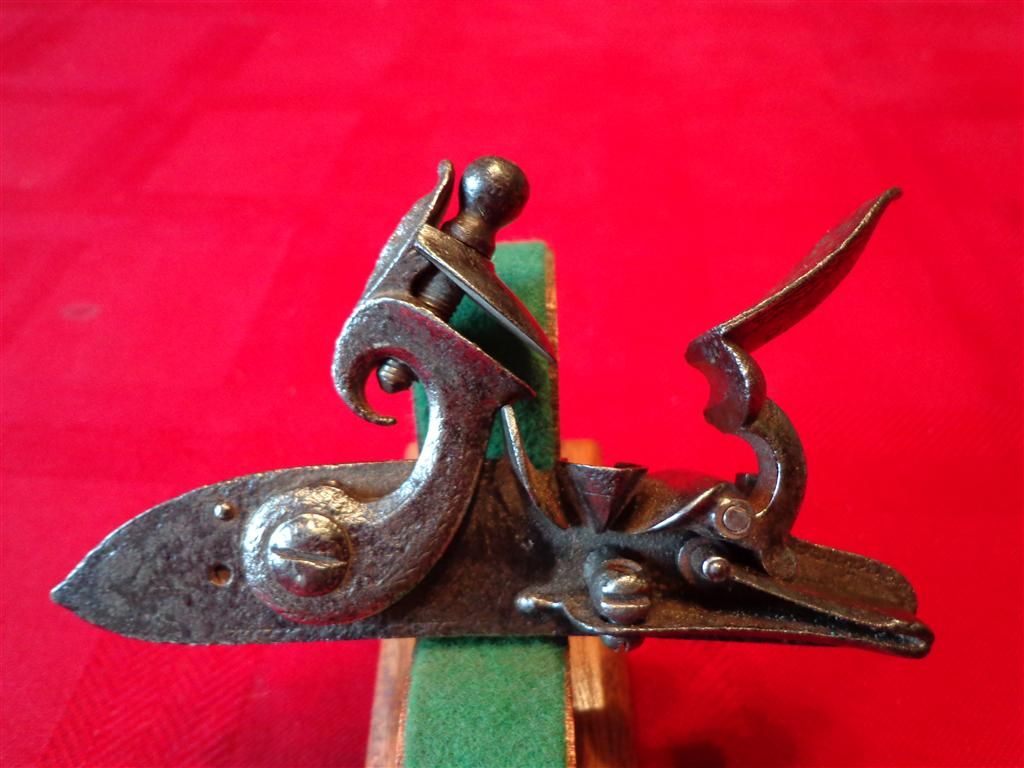
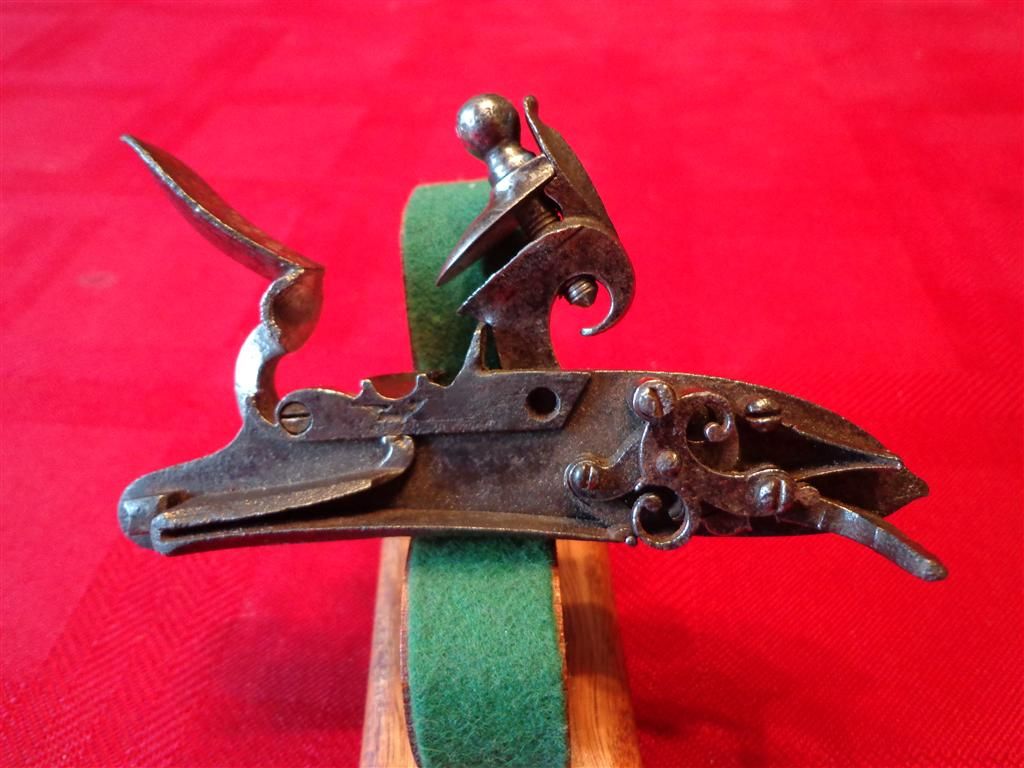

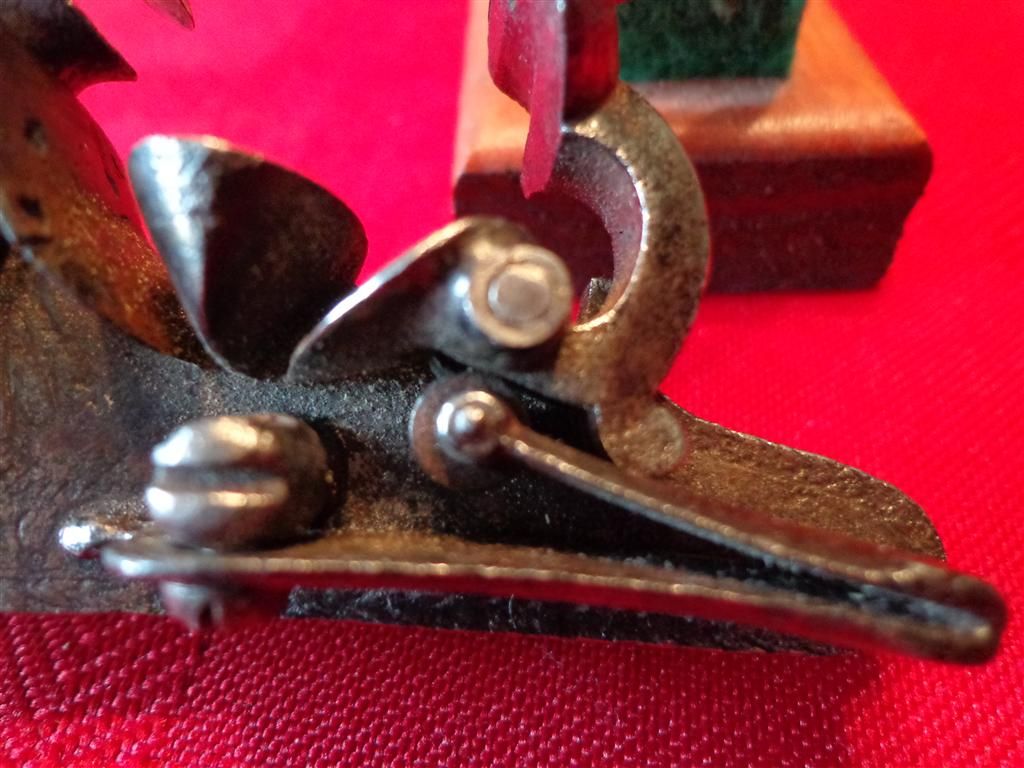
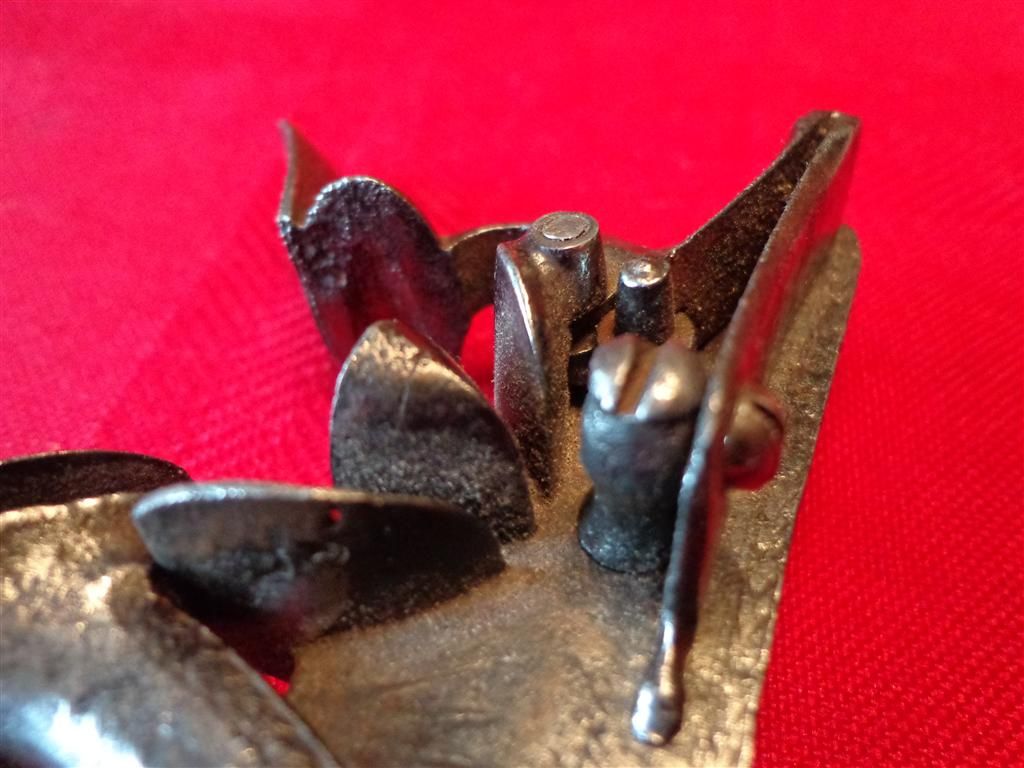
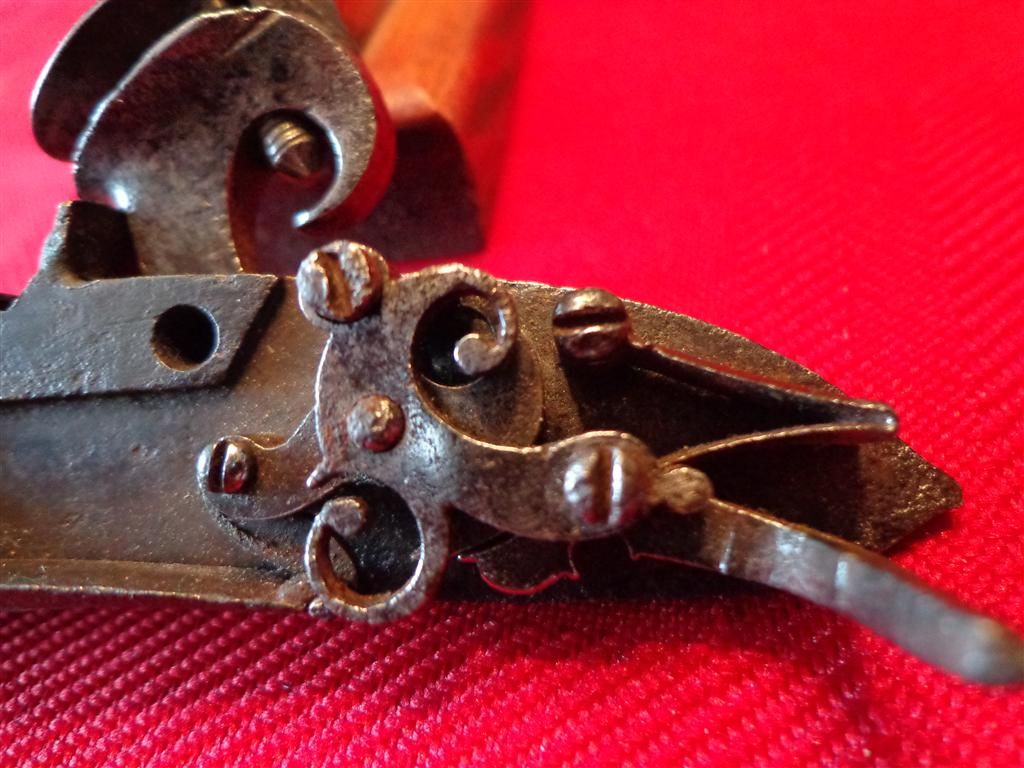
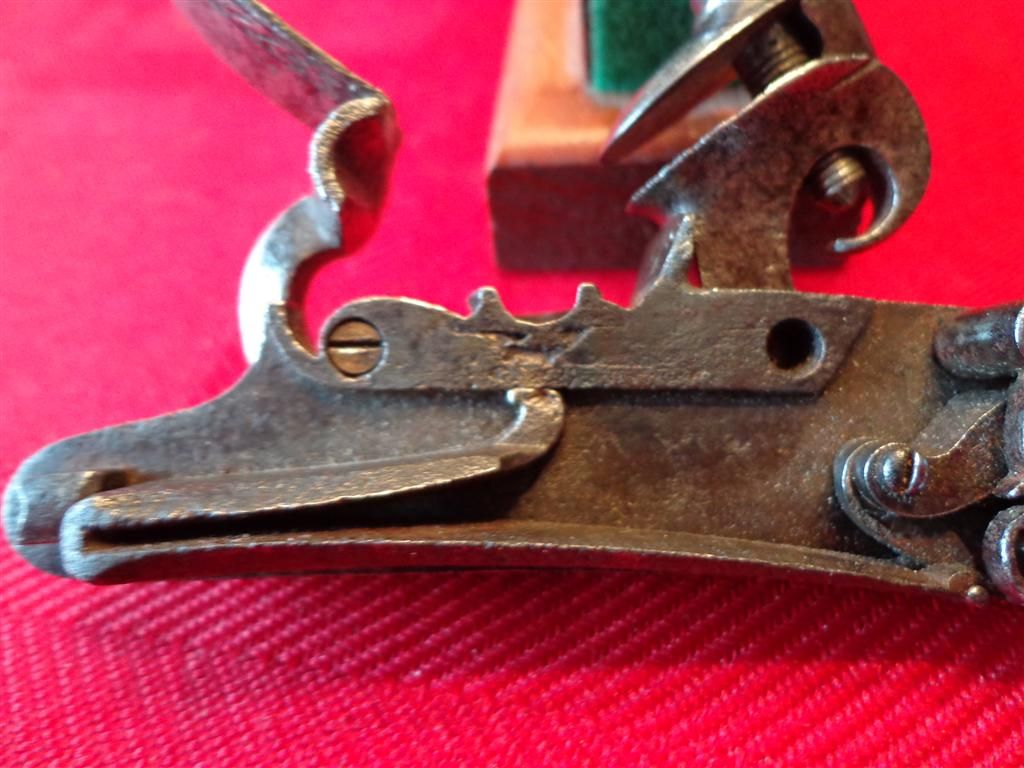
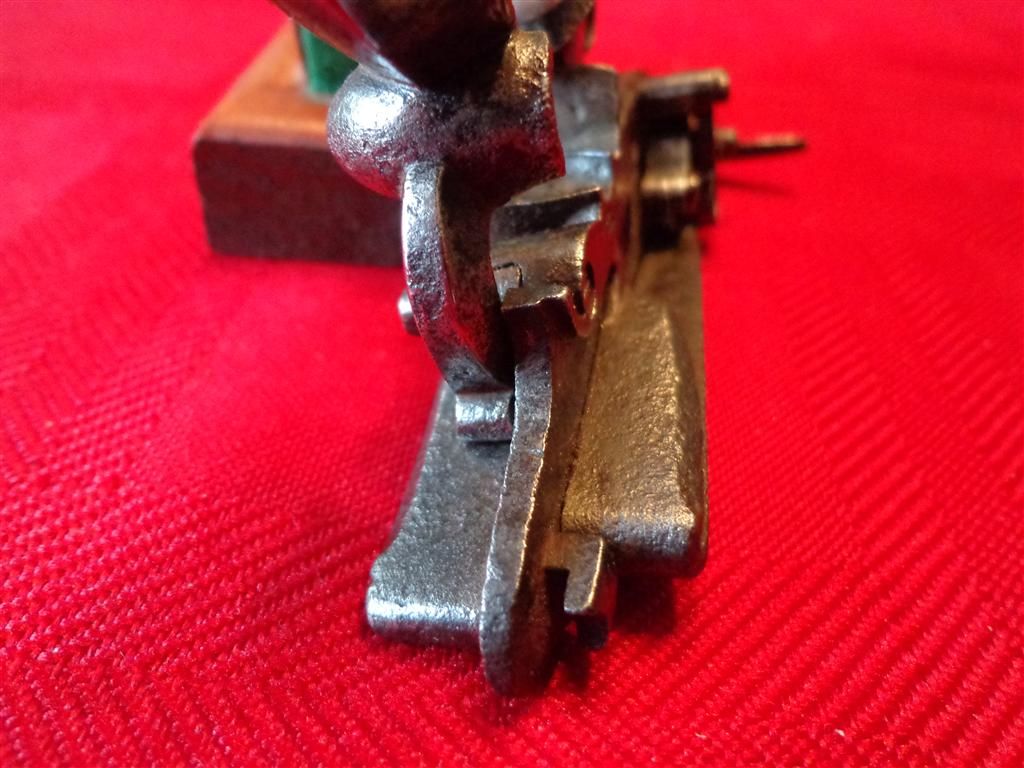
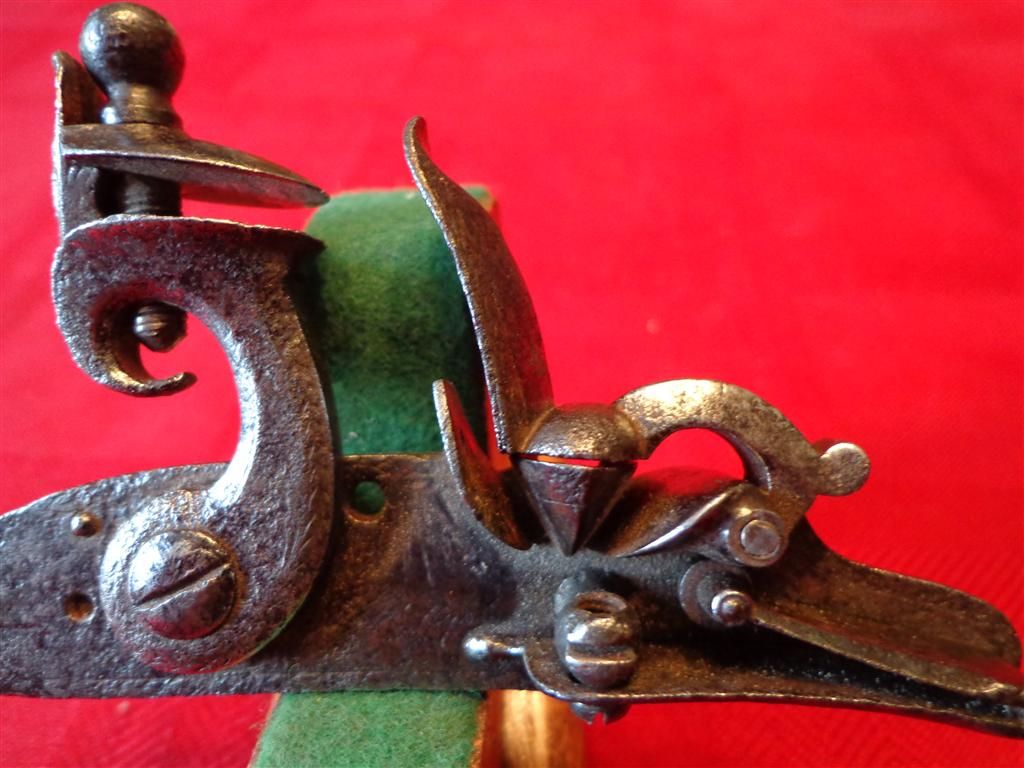
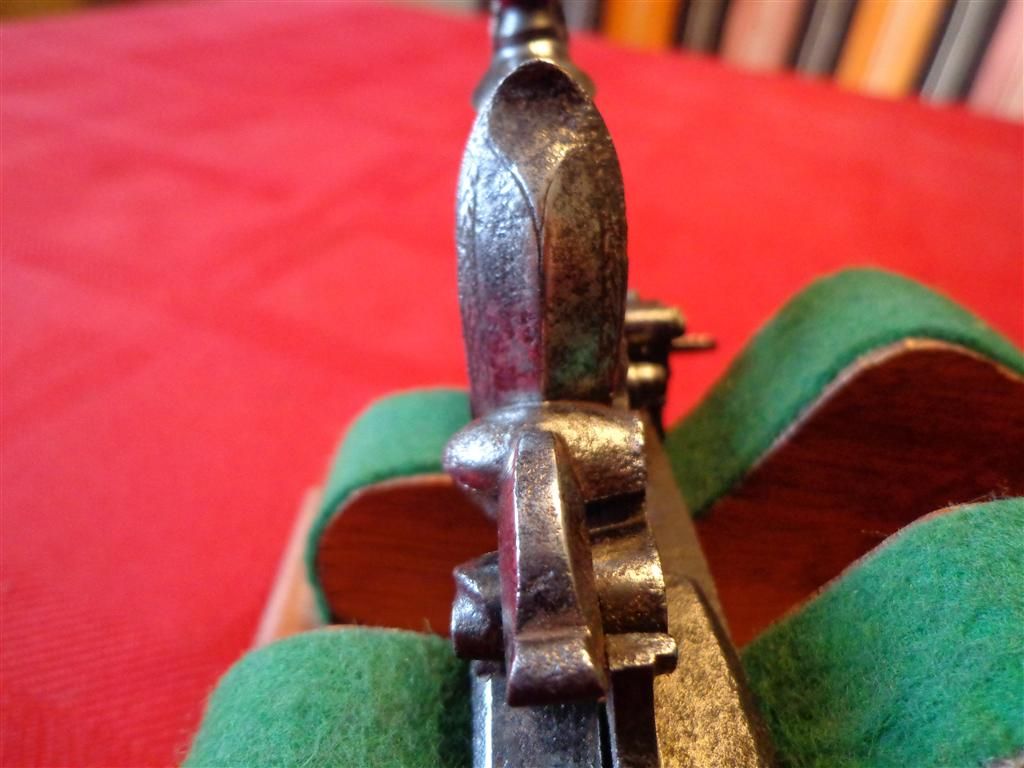
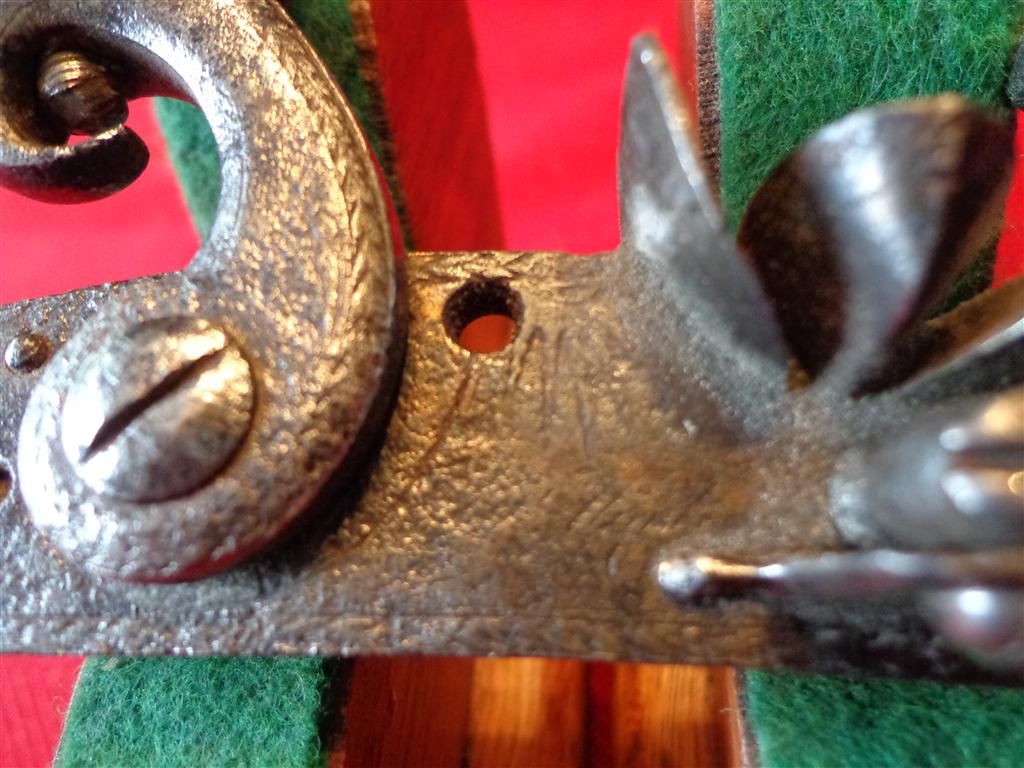
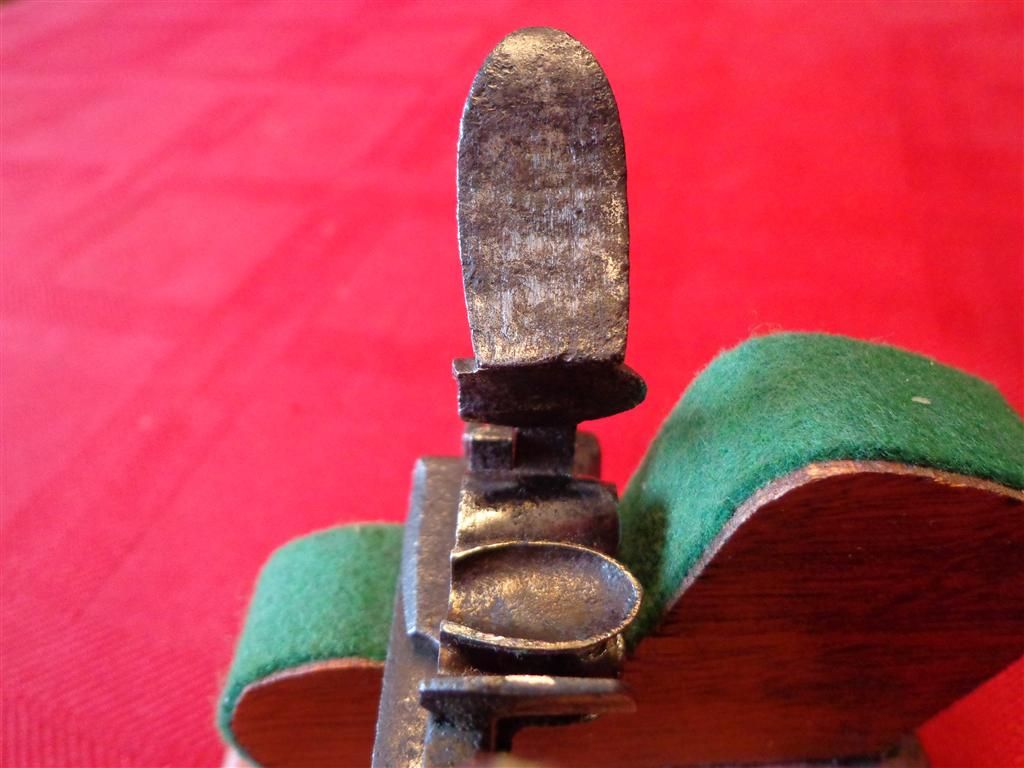
My question is: Does this look like a late period English made lock?
It is a smaller lock. Plate measures 4 1/4" long by 15/16" wide. Has a roller on the frizzen spring. It has a threaded hole for only one lock plate screw. But the inside front of the lock plate has a "hook" that would position against some kind of bar to hold it in place.
There is traces of light engraving throughout. There is a name on the lock plate that appears to be English script. Looks like maybe G Hughes ?? But it so faint, I'm not sure. Maybe a little oil cleaning will bring the name out better.
The lock is well made, and in good working order. Smooth and positive.
The more I look at this lock, the more I think it came from a late flint English fowling piece, or even one of a pair mounted to a sporting shotgun?
Would appreciate your opinions. Here's a bunch of photos. Sorry the natural light was not better. Rick. :hatsoff:


















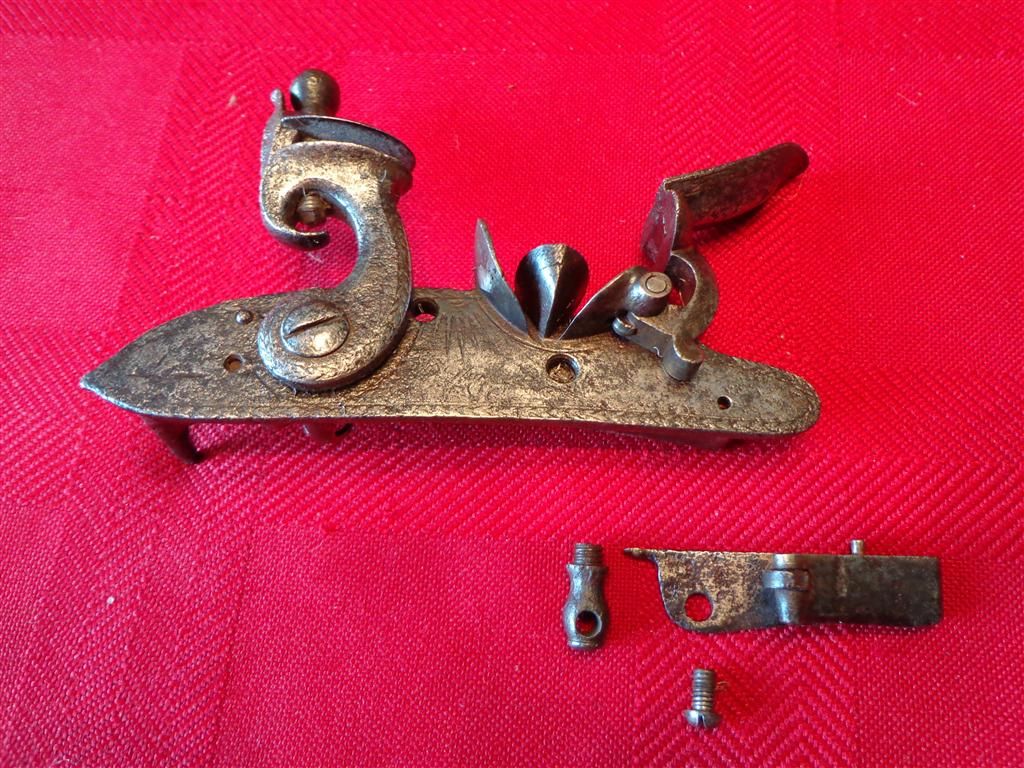 [/UR[URL=http://s743.photobucket.com/user/rickystl/media/Small%20Lock/DSC00465Medium_zpsd44b6503.jpg.html]
[/UR[URL=http://s743.photobucket.com/user/rickystl/media/Small%20Lock/DSC00465Medium_zpsd44b6503.jpg.html]
